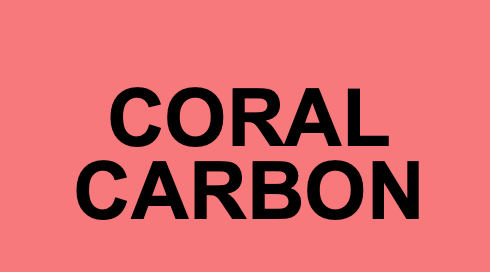CarbiCrete: The Concrete that Captures Carbon and Lowers Costs
How CarbiCrete is changing the Precast Concrete Industry with Carbon-Negative Solutions
We’ve written about concrete a few times including the excellent startup CarbonCure, related industries and companies such as Remora, and most recently on projects that will require a LOT of concrete (see Tuesday’s post on extending the Acela). Today we’ll be digging into CarbiCrete, a Montreal-based carbon removal technology company that is developing innovative, low-cost building solutions vis-a-vis carbon-negative precast concrete. The carbon-negative concrete market is an emerging segment within the construction industry, focused on developing and using concrete products that sequester more carbon dioxide than they emit during their production and use. Before we get into the market and CarbiCrete’s business, a little background on their technology and products.
Technology & Products
Reminder: Cement manufacturing produces one ton of carbon dioxide emissions for every ton of cement. Last year, global cement production was 4.1 billion metric tons, and that is expected to only grow. That is a lot of carbon dioxide emissions (about 8% of the global total) to capture and put somewhere.
CarbiCrete’s technology uses a process called carbonation activation, which eliminates the need for cement by replacing it with ground steel slag (a by-product from steel refinement and manufacturing) as the binding ingredient. They also inject carbon dioxide to give the precast products its strength, similar to CarbonCure. Any product made using CarbiCrete’s technology both turns industrial waste into a building block for high-quality construction products and permanently sequesters carbon dioxide; CarbiCrete claims that for every tonne of concrete product, 150kgs of carbon dioxide are removed (in addition to avoiding the carbon dioxide emissions from using cement).
CarbiCrete licenses their technology to precast concrete manufactures, as well as helps oversee the retrofit required to implement the new process, to help these existing plants produce lower-carbon, low cost, high-quality products. Their selling point is for a licensing fee they will help concrete manufacturers increase their sales and attract green new customers while lowering their manufacturing costs and carbon footprint. It is a win-win-win for everyone, including the environment.
Currently, CarbiCrete is scaling up their pilot project at Patio Drummond, a hardscape manufacturer in Drummondville, Quebec. They are producing 2,400 concrete masonry units (CMUs) per day, and with the capital influx from their Series A, are working to scale product to commercial volumes of 25,000 CMUs per day.
The Precast Concrete Market Size
Coming from Seattle and the never ending list of new construction projects, your Coral writers have seen a ton of concrete mixer trucks, so we were surprised by the size of the precast market. In 20201, the global market size for precast concrete was estimated at $96.3 billion and is projected to reach $162.7 billion by 2027.
The market share of precast concrete versus cast-in-place concrete varies by region, use case, and product type. Precast concrete has several advantages over cast-in-place concrete including faster installation, lower maintenance, higher durability, and better quality control. But it also faces challenges such as transportation, limited customization, and potential cracking. Precast concrete is generally more suitable for large-scale projects that require consistency, uniformity, and efficiency.
Bringing it back to Trains
Specially the Acela.
Extending the Acela to include Montreal, will require building another ~1000 miles of train track and related infrastructure, which is a lot of concrete.
Precast concrete is used in rail line construction for tunnel segments (form the lining of tunnels), sleepers (support the rail lines and distribute the load from trains), retaining walls (to stabilize the coil and prevent erosion along the train line), ties (which transfer load from lines to surrounding infrastructure), and more. Rail lines in North America average between 2,112 and 2,640 ties per mile. At an average weight of 600 pounds, a train line would need between 631 and 792 tons of precast concrete ties per mile. That is a lot of concrete.
Based on previous rail infrastructure projects, we can assume that precast concrete would account for 40% of the total cost of the rail construction. If we take our estimate from Tuesday that extending the Acela would be a $40 billion project, this is a $16 billion opportunity for precast concrete manufacturers. CarbiCrete needs to expand partnership and licensing agreements with key concrete manufacturers, including Hill & Griffith, Columbia Precast Products, Westcon Precast, and American Concrete Products, who will play a huge role in this type of infrastructure project.
Closing Thoughts
CarbiCrete’s business model is a licensing play. However, given the quality of the technology, we are left wondering why they didn’t go out to disrupt the industry and buy their own precast concrete manufacturing plant. This exposes one of the key differences between the US and Canadian startup communities, as we’re inclined to think that a US company with similar technological depth and quality would’ve raised much more than CarbiCrete’s $22m to date, and gone out for direct disruption of the concrete market. Is there a right answer or strategy here? No. We simply observe that the barriers to entry for capital acquisition seems to be a lot higher out of the US than in, and are considering ways to shrink that gap.
If you liked this, check out our piece on Remora, a start-up capturing carbon emissions from the trucking industry here.
One Fish, Two Fish, Red Fish, CO2 Fish
The Problem The global freight shipping sector represents 8% of greenhouse gas emissions, per MIT Climate Portal. The majority of this, almost 65%, comes from road vehicles, primarily semi trucks and smaller panel vans. While we’ll save the full discussion of emission differences between various freight-transport methods for another post, it is worth not…




